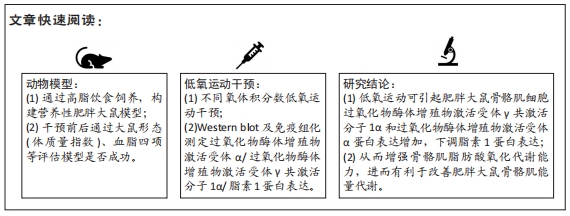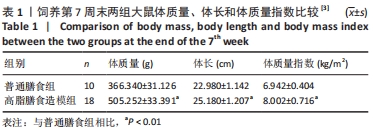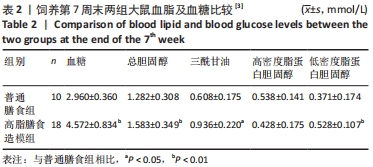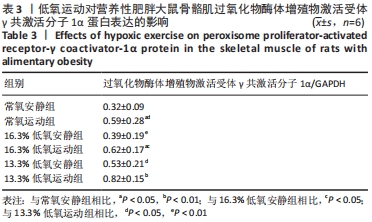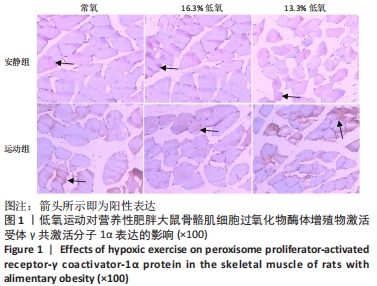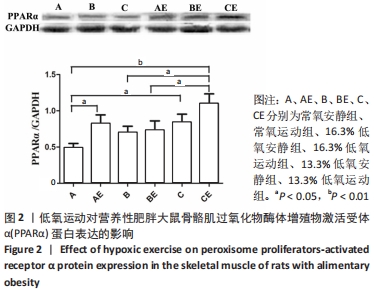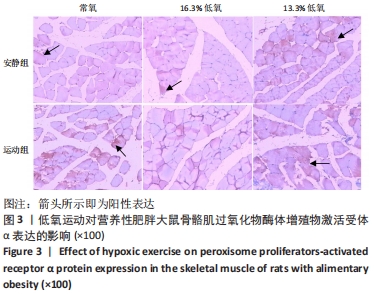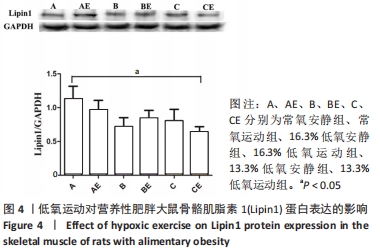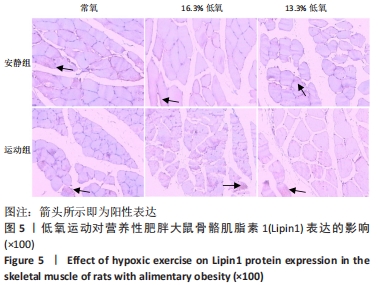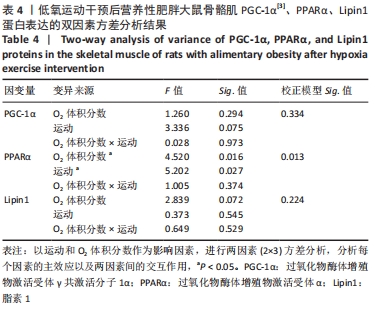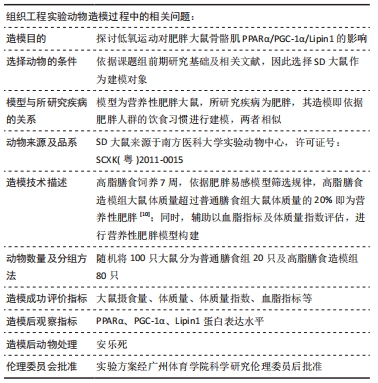[1] NAM GE, KIM YH, HAN K, et al. Obesity Fact Sheet in Korea, 2019: Prevalence of Obesity and Abdominal Obesity from 2009 to 2018 and Social Factors. J Obes Metab Syndr. 2020;29(2):124-132.
[2] CELIK O, YILDIZ BO. Obesity and physical exercise. Minerva Endocrinol (Torino). 2021; 46(2):131-144
[3] 吴菊花, 钟红梅, 杨亚南, 等. 低氧运动对营养性肥胖大鼠骨骼肌AMPK-PGC-1α的影响[J]. 中国运动医学杂志,2019,38(6):486-492.
[4] PARK HY, KIM J, PARK MY, et al. Exposure and Exercise Training in Hypoxic Conditions as a New Obesity Therapeutic Modality: A Mini Review. J Obes Metab Syndr. 2018;27(2):93-101.
[5] BENSAAD K, FAVARO E, LEWIS CA, et al. Fatty acid uptake and lipid storage induced by HIF-1α contribute to cell growth and survival after hypoxia-reoxygenation. Cell Rep. 2014;9(1):349-365.
[6] OU LC, LEITER JC. Effects of exposure to a simulated altitude of 5500 m on energy metabolic pathways in rats. Respir Physiol Neurobiol. 2004;141(1): 59-71.
[7] FINCK BN, KELLY DP. PGC-1 coactivators: inducible regulators of energy metabolism in health and disease. J Clin Invest. 2006;116(3):615-622.
[8] PARK JS, HOLLOSZY JO, KIM K, et al. Exercise Training-Induced PPARβ Increases PGC-1α Protein Stability and Improves Insulin-Induced Glucose Uptake in Rodent Muscles. Nutrients. 2020;12(3):652.
[9] SOORI R, ZADEH MM, GHRAM A, et al. Effects of Hypoxic and Normoxic Training in Altitude on HIF-1α and PGC-1α Levels in Elite Endurance Runners. J Exerc Sci Med. 2019;11(1):61-70.
[10] CHANDLER PC, VIANA JB, OSWALD KD, et al. Feeding response to melanocortin agonist predicts preference for and obesity from a high-fat diet. Physiol Behav. 2005;85(2):221-230.
[11] 汤锦花, 严海东. 营养性肥胖大鼠模型的建立及评价[J]. 同济大学学报(医学版),2010,31(1):32-34.
[12] ALTUNKAYNAK ME, OZBEK E, ALTUNKAYNAK BZ, et al. The effects of high-fat diet on the renal structure and morphometric parametric of kidneys in rats. J Anat. 2008;212(6):845-852.
[13] KELEHER MR, ZAIDI R, SHAH S, et al. Maternal high-fat diet associated with altered gene expression, DNA methylation, and obesity risk in mouse offspring. PLoS One. 2018;13(2):e0192606.
[14] ISLAM H, HOOD DA, GURD BJ. Looking beyond PGC-1α: emerging regulators of exercise-induced skeletal muscle mitochondrial biogenesis and their activation by dietary compounds. Appl Physiol Nutr Metab. 2020;45(1):11-23.
[15] WANG HT, ZHANG YC, XU MY, et al. Research progresses on PGC-1α, a key energy metabolic regulator. Sheng Li Xue Bao. 2020;72(6):804-816.
[16] HU G, XU L, MA Y, et al. Chronic exercise provides renal-protective effects with upregulation of fatty acid oxidation in the kidney of high fructose-fed rats. Am J Physiol Renal Physiol. 2020;318(3):F826-F834.
[17] WEI D, LIAO L, WANG H, et al. Canagliflozin ameliorates obesity by improving mitochondrial function and fatty acid oxidation via PPARα in vivo and in vitro. Life Sci. 2020;247:117414.
[18] CHUNG N, PARK J, LIM K. The effects of exercise and cold exposure on mitochondrial biogenesis in skeletal muscle and white adipose tissue. J Exerc Nutrition Biochem. 2017;21(2):39-47.
[19] DENG H, ZHANG W, RUAN D, et al. The Combination of Aerobic and Resistance Exercise Induces Weight Loss via the PGC-1α/Irisin/UCP-1 Pathway. J Biomater Tiss Eng. 2019;9(10):1388-1394.
[20] QI X, WANG J. Melatonin improves mitochondrial biogenesis through the AMPK/PGC1α pathway to attenuate ischemia/reperfusion-induced myocardial damage. Aging (Albany NY). 2020;12(8):7299-7312.
[21] 王慧婷, 张岩晨, 徐梦怡, 等. 能量代谢关键调控因子PGC-1α的研究进展[J]. 生理学报,2020,72(6):804-816.
[22] DIXON ED, NARDO AD, CLAUDEL T, et al. The Role of Lipid Sensing Nuclear Receptors (PPARs and LXR) and Metabolic Lipases in Obesity, Diabetes and NAFLD. Genes (Basel). 2021;12(5):645.
[23] NAJT CP, KHAN SA, HEDEN TD, et al. Lipid Droplet-Derived Monounsaturated Fatty Acids Traffic via PLIN5 to Allosterically Activate SIRT1. Mol Cell. 2020; 77(4):810-824.
[24] BARROSO E, RODRÍGUEZ-CALVO R, SERRANO-MARCO L, et al. The PPARβ/δ activator GW501516 prevents the down-regulation of AMPK caused by a high-fat diet in liver and amplifies the PGC-1α-Lipin 1-PPARα pathway leading to increased fatty acid oxidation. Endocrinology. 2011;152(5):1848-1859.
[25] 陈毅. 白藜芦醇通过激活AMPK-Lipin1信号通路改善酒精性脂肪肝[D].合肥:安徽医科大学,2015.
[26] ARAI T, TANAKA M, GODA N. HIF-1-dependent lipin1 induction prevents excessive lipid accumulation in choline-deficient diet-induced fatty liver. Sci Rep. 2018;8(1):14230.
[27] BOUGARNE N, WEYERS B, DESMET SJ, et al. Molecular Actions of PPARα in Lipid Metabolism and Inflammation. Endocr Rev. 2018;39(5):760-802.
[28] QI ZG, ZHAO X, ZHONG W, et al. Osthole improves glucose and lipid metabolism via modulation of PPARα/γ-mediated target gene expression in liver, adipose tissue, and skeletal muscle in fatty liver rats. Pharm Biol. 2016; 54(5):882-888.
[29] PHUA WWT, WONG MXY, LIAO Z, et al. An aPPARent Functional Consequence in Skeletal Muscle Physiology via Peroxisome Proliferator-Activated Receptors. Int J Mol Sci. 2018;19(5):1425.
[30] TAHRI-JOUTEY M, ANDREOLETTI P, SURAPUREDDI S, et al. Mechanisms Mediating the Regulation of Peroxisomal Fatty Acid Beta-Oxidation by PPARα. Int J Mol Sci. 2021;22(16):8969.
[31] RUSSELL AP, FEILCHENFELDT J, SCHREIBER S, et al. Endurance training in humans leads to fiber type-specific increases in levels of peroxisome proliferator-activated receptor-gamma coactivator-1 and peroxisome proliferator-activated receptor-alpha in skeletal muscle. Diabetes. 2003; 52(12):2874-2881.
[32] WANG TY, WANG XH. Effects of aerobic exercise on PPARα signaling in diabetes rats and its association with PPARγ. Zhongguo Ying Yong Sheng Li Xue Za Zhi. 2020;36(4):312-317.
[33] 路瑛丽, 谢敏豪, 冯连世, 等. 高住高练对肥胖大鼠腓肠肌脂肪酸氧化的影响[J]. 中国运动医学杂志,2014,33(11):1060-1068.
[34] 李格, 张缨. 低氧训练诱导AMPK对小鼠骨骼肌PPARα表达的影响[J]. 山东体育学院学报,2013,29(5):40-46.
[35] SHARMA S, TAEGTMEYER H, ADROGUE J, et al. Dynamic changes of gene expression in hypoxia-induced right ventricular hypertrophy. Am J Physiol Heart Circ Physiol. 2004;286(3):H1185-H1192.
[36] REUE K. The role of lipin 1 in adipogenesis and lipid metabolism. Novartis Found Symp. 2007;286:58-68.
[37] ISHIMOTO K. Lipin 1 in lipid metabolism. Yakugaku Zasshi. 2011;131(8): 1189-1194.
[38] HAUSMAN GJ, BASU U, DU M, et al. Intermuscular and intramuscular adipose tissues: Bad vs. good adipose tissues. Adipocyte. 2014; 3(4):242-255.
[39] FINCK BN, GROPLER MC, CHEN Z, et al. Lipin 1 is an inducible amplifier of the hepatic PGC-1alpha/PPARalpha regulatory pathway. Cell Metab. 2006; 4(3):199-210.
[40] PHAN J, REUE K. Lipin, a lipodystrophy and obesity gene. Cell Metab. 2005; 1(1):73-83.
[41] PHAN J, PÉTERFY M, REUE K. Lipin expression preceding peroxisome proliferator-activated receptor-gamma is critical for adipogenesis in vivo and in vitro. J Biol Chem. 2004;279(28):29558-29564.
|
